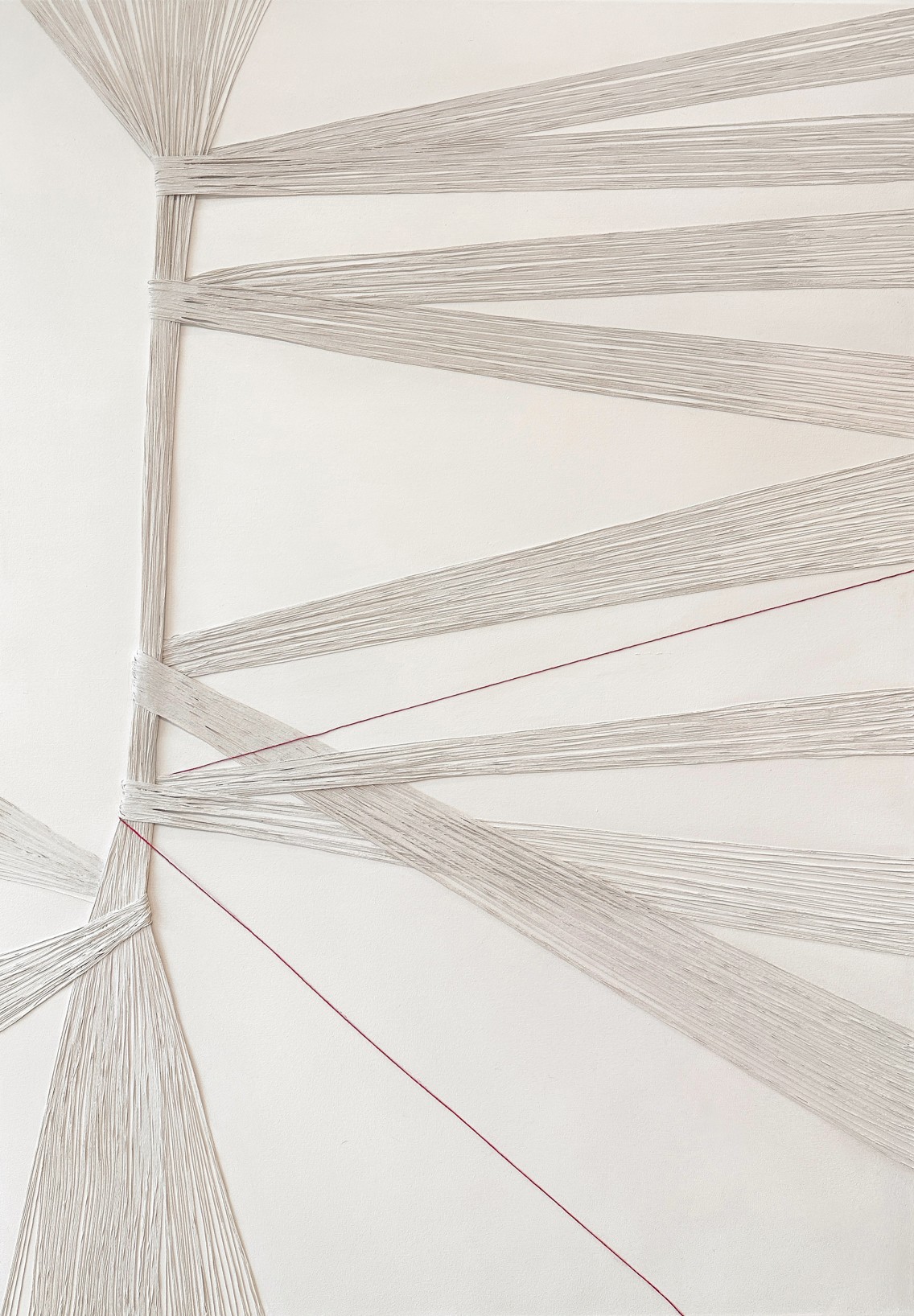Sameh KHALATBARI
1401 N m2 Resistance
May 18 - July 1, 2023
Reception for the artist Thursday, May 18, 6-8PM
-

1401 N m2 Resistance No. 1 Resistance
-

1401 N m2 Resistance No. 2 Chaos
-

1401 N m2 Resistance No. 3 Surge
-

1401 N m2 Resistance No. 4 Solidarity
-

1401 N m2 Resistance - Cities - Tehran
-

1401 N m2 Resistance - Cities - Esfahan
-

1401 N m2 Resistance - Cities - Rasht
-

1401 N m2 Resistance - Cities - Zahedan
-
--1684367604-SQR.jpg)
1401 N m2 Resistance No. 5 Zan (Woman in Farsi)
-

1401 N m2 Resistance No. 6 opposition
-

1401 N m2 Resistance No. 7 Revolution
-

1401 Nm2 Resistance No. 8 Martyr

Summary
On September 16, 2022, a 22-year-old woman named Mahsa Amini was beaten to death in Tehran. Detained on the road and separated from her family, she was tortured and killed by the Gasht-e-Ershad, Iran’s morality police. Her crime? Improperly wearing the hijab, exposing her hair. Within hours, protesters had filled the streets of Tehran and many other cities.
Seven thousand miles away in San Jose, the Iranian-American painter Sameh Khalatbari watched the news on television. As a woman who’d been forced to cover her hair before emigrating to the United States, she felt intense distress. She nervously sketched as she stared at the TV. When she looked down at the iPad resting in her lap, she found that she’d drawn hundreds of lines.
“I felt a responsibility to be the voice of the people in Iran and to spread the word with my art,” she recalls. “But I couldn’t be direct. I still have family there. When I visit, I could be arrested.” Her art could not be figurative, as it had been in the past. “I thought of using the lines I’d drawn as a symbol of women’s hair.”
Modernism is pleased to present a selection of 12 works from the series Khalatbari created in response to Amini’s murder and the ongoing conditions of gender apartheid in Iran. Her first solo show at the gallery, 1401 N/m2 Resistance takes its name from the year of the protests according to Iran’s Solar Hijri calendar and the metric unit of pressure. “Resistance alone could not express the magnitude of the event,” Khalatbari explains.
To embody her ideas and express the intensity of her feelings, she developed an entirely new technique. In the past, Khalatbari had always painted in acrylic on prepared canvases. For the new body of work, she worked with string, which she extended across canvas she stretched herself. “I wanted to make everything from scratch to show how this movement grew up from the heart of society, and how people naturally came to the street,” she says. “All of the fibers are natural, evoking women’s hair.”
Four of the works in the series are black, each bearing the name of a city where the protests were especially intense, suggesting the darkness of events. The remainder are white, which Khalatbari chose to show the calm perseverance of women in spite of their inner pain. A red thread runs through these works, symbolizing those who died in the protests. “Even with this loss of life, and even with the relentless pressure on their bodies, women stood in resistance,” she asserts. “They’re still standing and resisting.”
In aesthetic terms, Khalatbari’s abstract canvases evoke the artwork of Eva Hesse, deriving their strength from her mastery of raw materials and physical forces. This visceral effect is counterbalanced by Khalatbari’s commitment to symbolism in relation to color, connecting her work to Bauhaus masters such as Johannes Itten and Wassily Kandinsky.
Yet Khalatbari distinguishes herself from these aesthetic forebears because her art is also resolutely political. For many artists, abstraction and politics would be in tension. Khalatbari balances them as meticulously and elegantly as a mathematical equation.

